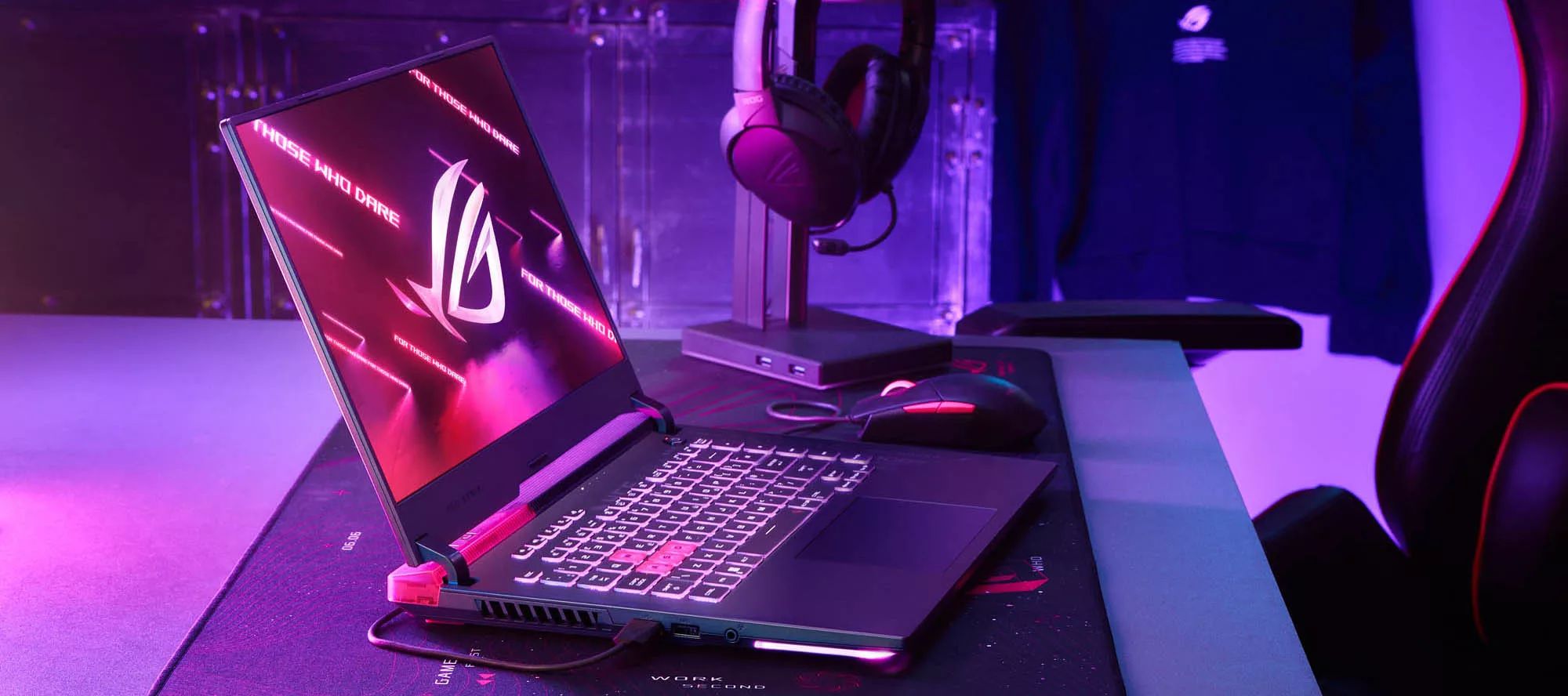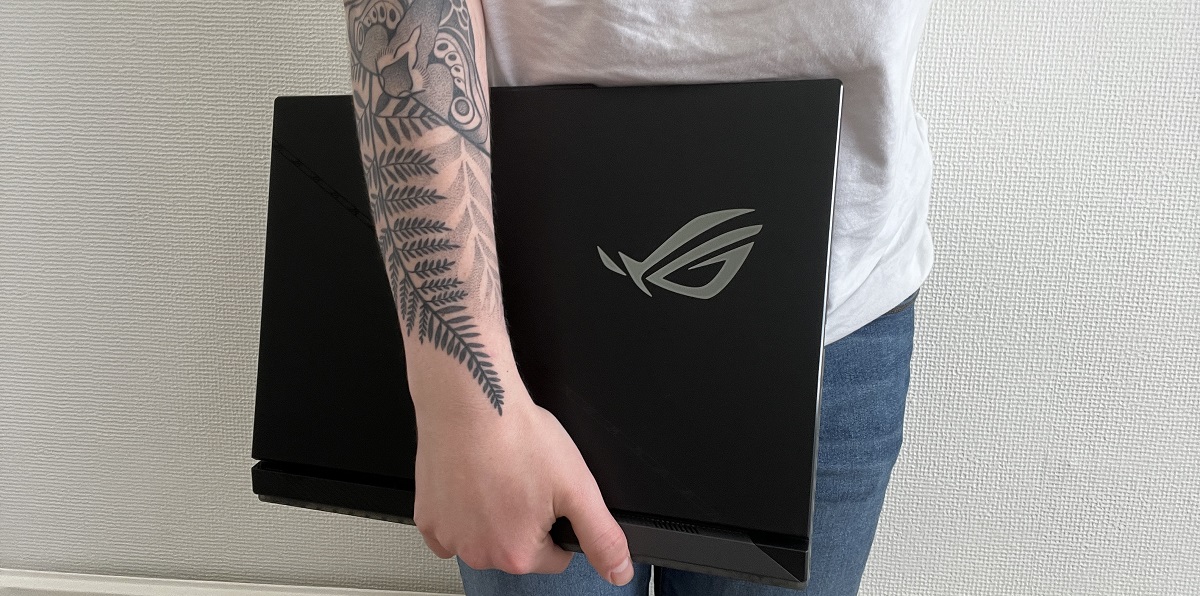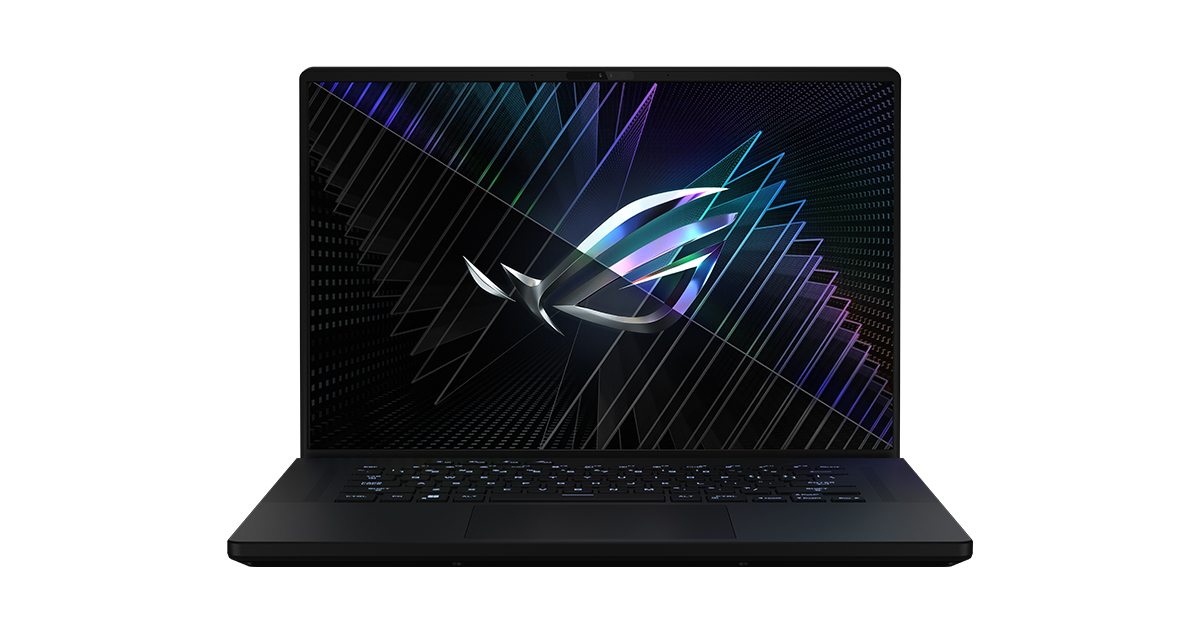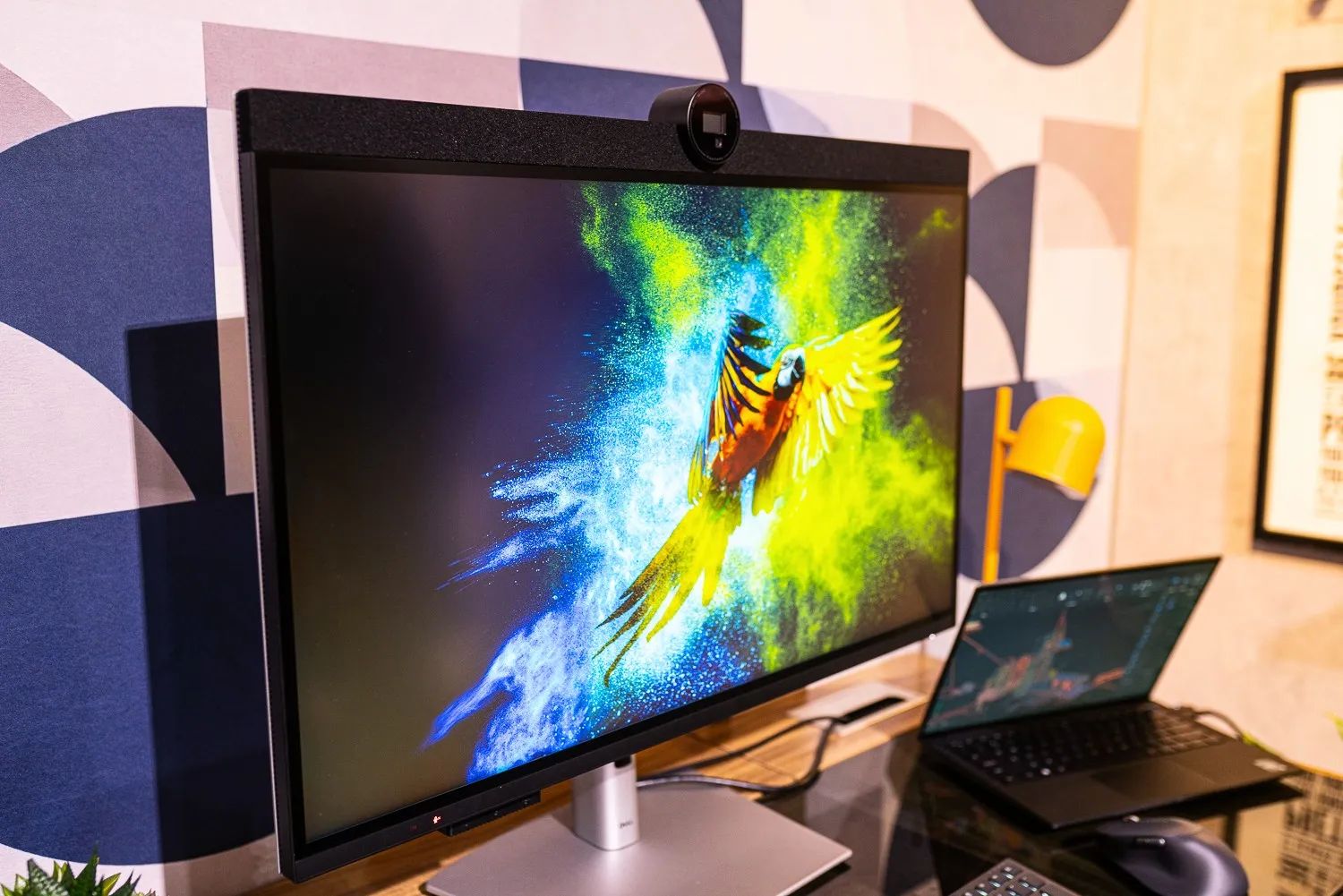Common Speaker Issues on Asus Gaming Laptops
Asus gaming laptops are known for their powerful performance and immersive audio experience. However, there may be times when you encounter issues with the speakers. Understanding the common problems that can occur will help you troubleshoot and resolve them effectively. Here are some of the most common speaker issues on Asus gaming laptops:
- No sound: One of the most frustrating issues is when there is no sound coming from the speakers. This can be due to a variety of reasons, such as volume settings, audio drivers, or hardware problems.
- Distorted sound: If you experience distorted or crackling sound from the speakers, it could indicate an issue with the audio drivers or damaged speaker components.
- Low volume: In some cases, you may notice that the volume level is lower than usual, even when turned up to the maximum. This can be caused by incorrect sound settings or outdated audio drivers.
- Audio cutting out: Another common problem is when the audio randomly cuts out or becomes intermittent. This can be caused by loose connections, faulty cables, or software conflicts.
- Buzzing or humming noise: If you hear a buzzing or humming noise coming from the speakers, it could be due to electrical interference or a grounding issue.
- Muted or disabled speakers: Sometimes, the speakers may get accidentally muted or disabled, resulting in no sound output. This can be easily rectified by adjusting the sound settings.
Dealing with speaker issues on your Asus gaming laptop can be frustrating, but there are several troubleshooting steps you can take to resolve them. In the following sections, we will walk you through the process of troubleshooting speaker problems and fixing them to restore the audio experience on your laptop.
Steps to Troubleshoot Speaker Problems
Having trouble with the speakers on your Asus gaming laptop? Not to worry! Here are some steps you can follow to troubleshoot and resolve common speaker problems:
- Check Speaker Connections: Start by ensuring that the speakers are properly connected to your laptop. Check the cables for any loose connections or damage. If using external speakers, make sure they are plugged into the correct audio port.
- Update Audio Drivers: Outdated or faulty audio drivers can cause speaker issues. Visit the Asus support website or use a reliable driver update tool to download and install the latest audio drivers for your laptop model.
- Adjust Sound Settings: Sometimes, the problem may lie with the sound settings. Right-click on the volume icon in the taskbar and select “Sound settings.” Check the volume level and ensure that the speakers are set as the default audio output device.
- Run Audio Troubleshooter: Windows has a built-in audio troubleshooter that can help identify and fix common speaker problems. To access it, go to “Settings” > “Update & Security” > “Troubleshoot” and then select “Playing audio.”
- Reset the Audio Service: Open the Run dialog box by pressing Windows + R and type “services.msc” before pressing Enter. Look for the “Windows Audio” service, right-click on it, and select “Restart.” This will reset the audio service and resolve any service-related issues.
- Test Speakers in Safe Mode: Boot your laptop into Safe Mode and check if the speakers work properly. If they do, it indicates that a third-party application or driver is causing the issue. Uninstall recently installed applications or update problematic drivers to fix the problem.
- Scan for Malware or Viruses: Malware or viruses can potentially interfere with system components, including the speakers. Run a thorough scan using reliable antivirus software to eliminate any potential threats.
- Check for Hardware Issues: If all else fails, it’s possible that there’s a hardware problem with the speakers. Consider contacting Asus customer support or taking your laptop to a professional technician for further diagnostics and repairs.
By following these troubleshooting steps, you should be able to identify and resolve most speaker problems on your Asus gaming laptop. Always remember to backup your important data before making any system changes and refer to the Asus support website or user manual for specific instructions related to your laptop model.
Method 1: Check Speaker Connections
If you’re experiencing speaker issues on your Asus gaming laptop, the first step is to check the speaker connections. Loose or faulty connections can often be the culprit behind audio problems. Follow these steps to ensure your speaker connections are secure:
- External Speakers: If you’re using external speakers, start by checking the cable connections. Ensure that the speakers are properly plugged into the correct audio port on your laptop. Make sure the cables are not damaged or frayed.
- Built-in Laptop Speakers: If you’re encountering issues with the built-in speakers, make sure there are no obstructions blocking the sound output. Check for any debris or dust that may have accumulated in the speaker grills. Gently clean the grills using compressed air or a soft brush to remove any particles that could affect the audio quality.
- Bluetooth Speakers or Headphones: If you’re using Bluetooth speakers or headphones, ensure that they are properly paired with your laptop. Check the Bluetooth settings on your laptop and make sure the speakers or headphones are connected. Try unpairing and reconnecting the device to see if that resolves the issue.
- Volume Controls: Double-check the volume controls on your laptop and the external speakers, if applicable. Ensure that the volume is turned up and not muted. Sometimes, accidentally muted or low volume settings can cause the speakers to appear faulty.
- Test Another Audio Source: Connect another audio source, such as a smartphone or MP3 player, to the speakers. If they work fine with another device, it indicates that the issue may be with your laptop’s audio settings or drivers.
By checking the speaker connections and ensuring that everything is properly connected, you can eliminate any potential issues related to loose connections or damaged cables. If the problem persists, proceed to the next troubleshooting method to further diagnose and resolve the speaker issues on your Asus gaming laptop.
Method 2: Update Audio Drivers
Outdated or incompatible audio drivers can often cause speaker issues on your Asus gaming laptop. Updating the audio drivers to the latest version can help resolve these problems. Follow these steps to update your audio drivers:
- Identify the Audio Device: First, you need to identify the audio device on your Asus gaming laptop. Right-click on the Start button and select “Device Manager.” In the Device Manager window, expand the “Sound, video, and game controllers” category to see the audio devices listed.
- Update the Audio Drivers: Right-click on the audio device and select “Update driver.” Choose the option to search automatically for updated driver software. Windows will then scan for the latest driver updates for your audio device and install them if available. Alternatively, you can visit the Asus support website to manually download the latest audio drivers specifically designed for your laptop model.
- Restart Your Laptop: After updating the audio drivers, it is recommended to restart your laptop to ensure the changes take effect. Restarting can also help in resolving any conflicts that may be causing speaker issues.
- Windows Update: In some cases, Windows Update may also provide the latest audio drivers. You can check for updates by going to “Settings” > “Update & Security” > “Windows Update” and clicking on the “Check for updates” button. If there are any available updates for your audio drivers, Windows Update will install them.
- Driver Update Utilities: If you prefer a more automated approach, you can use driver update utilities such as Driver Booster or Driver Easy. These tools can scan your laptop, detect outdated or missing drivers, and automatically download and install the latest audio drivers for you.
Updating the audio drivers is a crucial step in resolving speaker problems on your Asus gaming laptop. By keeping your drivers up to date, you ensure compatibility with the latest software updates and improvements. If updating the audio drivers doesn’t solve the speaker issues, proceed to the next troubleshooting method.
Method 3: Adjust Sound Settings
If you’re experiencing speaker issues on your Asus gaming laptop, adjusting the sound settings can often help resolve the problem. Here are some steps to follow to adjust the sound settings:
- Open Sound Settings: Right-click on the volume icon in the taskbar and select “Open Sound settings.” Alternatively, you can go to “Settings” > “System” > “Sound” to access the sound settings.
- Check Volume Level: In the Sound settings, make sure the volume level is set appropriately. Drag the volume slider or click on the volume icon to adjust the volume level. Sometimes, the volume might be inadvertently set too low, leading to the perception of speaker issues.
- Select the Correct Playback Device: Check that the speakers are set as the default audio playback device. Under the “Output” section in the Sound settings, verify that the correct device is selected. If there are multiple audio devices listed, choose the one that corresponds to the speakers you are using.
- Configure Sound Enhancements: In the Sound settings, click on the “Device properties” link under the Output section. In the Speaker Properties window, go to the “Enhancements” tab. Experiment with enabling or disabling sound enhancements such as bass boost or virtual surround sound to see if it improves the audio quality.
- Modify Advanced Sound Settings: Under the “Advanced sound options,” you can further fine-tune the sound settings. Adjust options such as sample rate, bit depth, and sound format to optimize the audio performance. However, be cautious when making changes to advanced settings, as incorrect configuration may cause more audio issues.
By adjusting the sound settings on your Asus gaming laptop, you can often resolve speaker issues related to volume levels or incorrect device settings. If adjusting the sound settings does not solve the problem, continue to the next troubleshooting method to further diagnose and fix the speaker issues.
Method 4: Run Audio Troubleshooter
If you’re experiencing speaker issues on your Asus gaming laptop, running the built-in audio troubleshooter can help identify and resolve common audio problems. Follow these steps to run the audio troubleshooter:
- Open Windows Settings: Click on the “Start” menu and select the “Settings” gear icon. Alternatively, you can press the Windows key + I on your keyboard to directly open the Settings window.
- Access Troubleshoot Settings: In the Settings window, click on the “Update & Security” option.
- Navigate to Troubleshoot: In the left sidebar of the Update & Security window, select the “Troubleshoot” option.
- Run audio troubleshooter: Scroll down and click on the “Playing audio” option under the “Find and fix other problems” section. Then click on the “Run the troubleshooter” button.
- Follow the Troubleshooter Steps: The audio troubleshooter will now analyze your system for any speaker issues. Follow the on-screen instructions to complete the troubleshooter. It will attempt to diagnose and automatically fix any problems it finds.
- Apply Fixes: After completing the troubleshooting process, the audio troubleshooter will provide a report indicating the issues found and the fixes applied, if any. Take note of the suggested fixes and apply them accordingly.
The audio troubleshooter is designed to detect and resolve common speaker issues on your Asus gaming laptop. It can identify problems such as incorrect audio settings, driver conflicts, or hardware malfunctions. If the audio troubleshooter is able to fix the issues, the speaker problems should now be resolved. However, if the problem persists, continue to the next troubleshooting method to further address the speaker issues on your laptop.
Method 5: Reset the Audio Service
If you’re still experiencing speaker issues on your Asus gaming laptop, resetting the audio service can help resolve any service-related problems that may be affecting the speakers. Here are the steps to reset the audio service:
- Open the Run Dialog Box: Press the Windows key + R on your keyboard to open the Run dialog box.
- Type “services.msc”: In the Run dialog box, type “services.msc” (without quotes) and press Enter. The Services window will open.
- Locate Windows Audio Service: In the Services window, locate and scroll down to find the “Windows Audio” service.
- Restart the Audio Service: Right-click on the “Windows Audio” service and select “Restart” from the context menu. This will stop and restart the audio service.
- Check the Dependencies: If the audio service fails to restart or if you encounter any error messages, make sure to check the dependencies of the “Windows Audio” service. Right-click on the service and select “Properties” from the context menu. In the Properties window, go to the “Dependencies” tab and ensure that all the necessary services are running.
- Restart Your Laptop: After resetting the audio service, it is recommended to restart your Asus gaming laptop. This will help apply the changes and ensure that the audio service is functioning properly.
Resetting the audio service can help resolve issues related to service conflicts or glitches that may be impacting the speakers on your laptop. If the speaker problems persist, proceed to the next troubleshooting method to further diagnose and address the issue.
Method 6: Test Speakers in Safe Mode
If you’re still facing speaker issues on your Asus gaming laptop, testing the speakers in Safe Mode can help determine if the problem is caused by a third-party application or driver. Here’s how you can test the speakers in Safe Mode:
- Restart Your Laptop: Start by restarting your laptop. On startup, continuously press the F8 key (or the appropriate key for your laptop model) to enter the Advanced Boot Options menu.
- Select Safe Mode: In the Advanced Boot Options menu, use the arrow keys to navigate to the “Safe Mode” option and press Enter. Your laptop will boot into Safe Mode, loading only essential system files and drivers.
- Test the Speakers: Once in Safe Mode, play audio or video files to test the speakers. Check if the speaker issues, such as no sound or distorted audio, still persist. If the speakers work fine in Safe Mode, it suggests that a third-party application or driver is causing the problem.
- Uninstall Recently Installed Applications: If the speakers work in Safe Mode but not in normal mode, it indicates that a recently installed application may be conflicting with the audio drivers or settings. Uninstall any applications that you have installed recently or update their drivers to see if it resolves the speaker issues. Alternatively, you can perform a system restore to a point before the problem started occurring.
- Update Problematic Drivers: If you suspect that a specific driver is causing the speaker issues, try updating it. Visit the manufacturer’s website for your laptop model and download the latest audio drivers. Install the drivers and restart your laptop to see if it resolves the problem.
Testing the speakers in Safe Mode helps isolate the issue to a third-party application or driver. By determining whether the speaker issues persist in Safe Mode, you can take appropriate steps to uninstall problem-causing applications or update conflicting drivers. If the speaker problems continue even in Safe Mode, proceed to the next troubleshooting method to further diagnose and fix the issues.
Method 7: Scan for Malware or Viruses
If you’re still encountering speaker issues on your Asus gaming laptop, it’s essential to rule out the possibility of malware or viruses causing the problem. Malicious software can interfere with system components, including the audio drivers, which may result in speaker problems. Follow these steps to scan for malware or viruses:
- Ensure Antivirus Software is Up to Date: Start by confirming that your antivirus software is up to date. Open your antivirus program and check for any available updates. Update your antivirus software to ensure you have the latest virus definitions and protection.
- Perform a Full System Scan: Initiate a full system scan using your antivirus software. Allow the scan to complete, as it will thoroughly examine your laptop for any malware or viruses that could be affecting the speaker functionality.
- Quarantine or Remove Detected Threats: If the antivirus scan detects any malware or viruses, follow the instructions provided by the software to quarantine or remove the threats. Quarantine isolates the infected files, while removal permanently deletes them from your system.
- Utilize Malware Removal Tools: In addition to your antivirus software, it may be beneficial to use additional malware removal tools. Anti-malware programs such as Malwarebytes are designed specifically to detect and remove malware that may have been missed by your antivirus software.
- Restart Your Laptop: After completing the malware scan and removing any detected threats, restart your laptop. This will ensure that any lingering malicious processes or files are completely eradicated.
Scanning your laptop for malware or viruses is an essential step in troubleshooting speaker issues. By removing any potential threats, you eliminate the possibility of malicious software interfering with the audio drivers or settings. If the speaker problems persist, proceed to the next troubleshooting method to further address the issue.
Method 8: Check for Hardware Issues
If you’re still facing speaker issues on your Asus gaming laptop, it’s important to consider the possibility of hardware problems. Checking for hardware issues can help determine if there are any physical faults affecting the speakers. Follow these steps to check for hardware issues:
- Physical Inspection: Inspect the speakers and their connections for any visible damage. Look for frayed cables, loose connections, or any other signs of physical impairment. If you notice any issues, it may be necessary to replace the damaged components or seek professional repairs.
- Test with Different Speakers: Connect a different pair of external speakers or headphones to your laptop. If the alternate speakers work properly, it indicates that the issue lies with the original speakers. However, if the problem persists with the different speakers, it suggests a problem with the audio output on your laptop.
- External Audio Device: Use your Asus gaming laptop to connect to an external audio device, such as a TV or another laptop, via HDMI or audio-out ports. If the audio plays fine on the external device, it indicates that the issue is specific to your laptop’s internal speakers or audio hardware.
- Update BIOS: Visit the Asus support website and check if there are any BIOS updates available for your laptop. Updating the BIOS can sometimes resolve hardware compatibility issues that may be affecting the speakers.
- Professional Assistance: If you’ve followed the above steps and the speaker issues still persist, it’s recommended to consult a professional technician or contact Asus customer support for further assistance. They can provide advanced diagnostics and offer appropriate solutions for any underlying hardware problems.
Identifying hardware issues can help pinpoint the cause of persistent speaker issues on your Asus gaming laptop. By examining physical components and conducting tests with alternate speakers or external audio devices, you can determine if there are any hardware-related faults. Seek professional assistance if necessary to address the hardware issues effectively.
Conclusion
Speaker issues on your Asus gaming laptop can be frustrating, but they can often be resolved with the right troubleshooting steps. By following the methods outlined in this guide, you can effectively diagnose and address common speaker problems.
We started by discussing common speaker issues that you may encounter, such as no sound, distorted audio, low volume, or buzzing noise. Understanding these problems can help you narrow down the potential causes and find the appropriate solutions.
We then provided you with a step-by-step guide on how to troubleshoot speaker problems. From checking speaker connections and updating audio drivers to adjusting sound settings and running the audio troubleshooter, each method aimed to resolve specific issues that could be affecting your laptop’s speakers.
If the initial troubleshooting methods didn’t solve the problem, we explored more advanced steps. These included testing the speakers in Safe Mode, scanning for malware or viruses, and checking for hardware issues. These steps helped identify potential software conflicts, malicious programs, or physical faults that could be impacting the speaker performance.
Remember to always backup your important data before making any changes to your system and refer to the Asus support website or user manual for specific instructions related to your laptop model.
If you’ve exhausted all the troubleshooting methods and the speaker issues persist, it’s recommended to seek professional assistance from Asus customer support or a qualified technician. They can provide further diagnosis and offer appropriate solutions to address any underlying hardware problems.
By following these steps and using a systematic approach, you can effectively troubleshoot and resolve speaker issues on your Asus gaming laptop, restoring the audio experience and allowing you to fully immerse yourself in your favorite games and multimedia content.

























